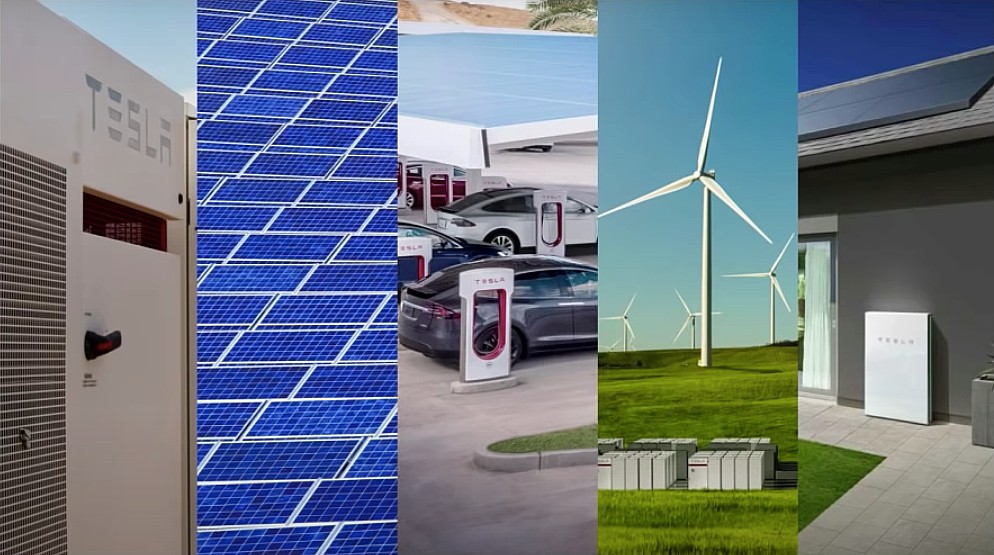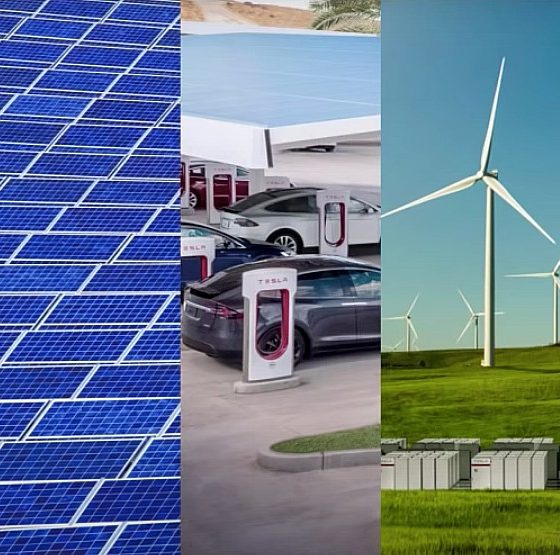

Energy
Tesla poised to unlock vehicle-to-grid abilities with ‘bi-directional’ charging systems
It appears that Tesla is building up to the eventual release of vehicle to grid (V2G) features for its fleet. Hints of this technology could be seen in the codes within the company’s vehicles, as well as the recent findings of Cruise Staff fleet Reliability Engineer Marco Gaxiola, who happened to perform an analysis of Tesla’s electric vehicle charger for the Model 3.
For the most part, Tesla has been pretty quiet about its intentions to roll out a vehicle to grid feature for its fleet. Elon Musk mentioned that it may be worth revisiting V2G in a tweet back in July 2018, but he has been quite silent about the technology since then. That being said, Tesla hacker-enthusiast @greentheonly mentioned that some references to V2G have actually been in the company’s vehicles for over a year.
Among this is the presence of logic that would allow DC to flow out of a Tesla’s battery pack. The hacker-enthusiast summed up his observations as follows “There’s logic to allow DC to flow out the battery pack. So you can supply an external grid-tie invertor with that and let it do the rest of the magic. Making it part of the HPWC would make a lot of sense in my view,” he wrote.
Vehicle to grid features are not new in the EV sphere. The Nissan Leaf, one of the first mainstream electric cars, had this feature, though its V2G technology could be used more like a manual backup power supply. This made the Leaf’s V2G solutions rather limited. But when V2G is taken at scale, and if vehicles are in smart communication with the power grid, things become a lot more compelling.
Back in 2015, Tesla CTO JB Straubel noted that once there are a million Teslas on the road, the fleet could actually have significant controllable load capacity. This milestone was reached recently by Tesla, with the company producing its millionth vehicle, a red Model Y Performance, earlier this year. And considering that Tesla is now taking on the mainstream market with the Model Y and Model 3, there is a good chance that the growth of its fleet would only accelerate over time. If Tesla were to roll out V2G features for its cars, now, or the near future, would be a preferable time to do it.
But this is not all. In a recent statement to Electrek, Cruise Staff fleet Reliability Engineer Marco Gaxiola noted that the Model 3’s charger has the necessary technology to enable bidirectional charging features. Gaxiola came to his conclusions after doing a deep dive on the Model 3 charger. “What I learned on reverse engineering the Model 3 charger, was that the design is fully bidirectional. This means power can be converted from AC to DC the same way as the previous example, but also power can flow in reverse direction, coming from the battery and ending up on the AC side,” he told the publication.
In a following LinkedIn post, the Cruise engineer noted that Tesla would likely be able to roll out its V2G features to its fleet through a software update. This could open up a lot of opportunities for electric car owners, as they could actually sell some of their vehicles’ power back to the grid.
“I believe this will be a big game changer for all the car companies looking to get into the EV market. But will also be an interesting new road to get into the utility market. Imagine that you own this vehicle, and one morning you receive an update notification that will enable this feature, which will convert your vehicle into an energy storage V2G/V2V smart system with wheels.
“You will technically be able to take energy from any AC outlet at a good rate (via your traditional L1 or L2 wall charger) and later then drive somewhere else, plug back again into another L1/L2 charger, but instead of charging you could potentially sell some of your Tesla juice back at a higher rate. This, without the need of any electrical modifications on your Tesla/Non-Tesla wall charger,” Gaxiola wrote.

Cybertruck
Tesla updates Cybertruck owners about key Powershare feature

Tesla is updating Cybertruck owners on its timeline of a massive feature that has yet to ship: Powershare with Powerwall.
Powershare is a bidirectional charging feature exclusive to Cybertruck, which allows the vehicle’s battery to act as a portable power source for homes, appliances, tools, other EVs, and more. It was announced in late 2023 as part of Tesla’s push into vehicle-to-everything energy sharing, and acting as a giant portable charger is the main advantage, as it can provide backup power during outages.
Cybertruck’s Powershare system supports both vehicle-to-load (V2L) and vehicle-to-home (V2H), making it flexible and well-rounded for a variety of applications.
However, even though the feature was promised with Cybertruck, it has yet to be shipped to vehicles. Tesla communicated with owners through email recently regarding Powershare with Powerwall, which essentially has the pickup act as an extended battery.
Powerwall discharge would be prioritized before tapping into the truck’s larger pack.
However, Tesla is still working on getting the feature out to owners, an email said:
“We’re writing to let you know that the Powershare with Powerwall feature is still in development and is now scheduled for release in mid-2026.
This new release date gives us additional time to design and test this feature, ensuring its ability to communicate and optimize energy sharing between your vehicle and many configurations and generations of Powerwall. We are also using this time to develop additional Powershare features that will help us continue to accelerate the world’s transition to sustainable energy.”
Owners have expressed some real disappointment in Tesla’s continuous delays in releasing the feature, as it was expected to be released by late 2024, but now has been pushed back several times to mid-2026, according to the email.
Foundation Series Cybertruck buyers paid extra, expecting the feature to be rolled out with their vehicle upon pickup.
Cybertruck’s Lead Engineer, Wes Morrill, even commented on the holdup:
As a Cybertruck owner who also has Powerwall, I empathize with the disappointed comments.
To their credit, the team has delivered powershare functionality to Cybertruck customers who otherwise have no backup with development of the powershare gateway. As well as those with solar…
— Wes (@wmorrill3) December 12, 2025
He said that “it turned out to be much harder than anticipated to make powershare work seamlessly with existing Powerwalls through existing wall connectors. Two grid-forming devices need to negotiate who will form and who will follow, depending on the state of charge of each, and they need to do this without a network and through multiple generations of hardware, and test and validate this process through rigorous certifications to ensure grid safety.”
It’s nice to see the transparency, but it is justified for some Cybertruck owners to feel like they’ve been bait-and-switched.
Energy
Tesla starts hiring efforts for Texas Megafactory
Tesla’s Brookshire site is expected to produce 10,000 Megapacks annually, equal to 40 gigawatt hours of energy storage.

Tesla has officially begun hiring for its new $200 million Megafactory in Brookshire, Texas, a manufacturing hub expected to employ 1,500 people by 2028. The facility, which will build Tesla’s grid-scale Megapack batteries, is part of the company’s growing energy storage footprint.
Tesla’s hiring efforts for the Texas Megafactory are hinted at by the job openings currently active on the company’s Careers website.
Tesla’s Texas Megafactory
Tesla’s Brookshire site is expected to produce 10,000 Megapacks annually, equal to 40 gigawatt hours of energy storage, similar to the Lathrop Megafactory in California. Tesla’s Careers website currently lists over 30 job openings for the site, from engineers, welders, and project managers. Each of the openings is listed for Brookshire, Texas.
The company has leased two buildings in Empire West Business Park, with over $194 million in combined property and equipment investment. Tesla’s agreement with Waller County includes a 60% property tax abatement, contingent on meeting employment benchmarks: 375 jobs by 2026, 750 by 2027, and 1,500 by 2028, as noted in a report from the Houston Business Journal. Tesla is required to employ at least 1,500 workers in the facility through the rest of the 10-year abatement period.
Tesla’s clean energy boom
City officials have stated that Tesla’s arrival marks a turning point for the Texas city, as it highlights a shift from logistics to advanced clean energy manufacturing. Ramiro Bautista from Brookshire’s economic development office, highlighted this in a comment to the Journal.
“(Tesla) has great-paying jobs. Not just that, but the advanced manufacturing (and) clean energy is coming to the area,” he said. “So it’s not just your normal logistics manufacturing. This is advanced manufacturing coming to this area, and this brings a different type of job and investment into the local economy.”
Energy
Tesla and Samsung SDI in talks over new US battery storage deal: report
The update was related by industry sources and initially reported by South Korean news outlets.

Recent reports have suggested that Tesla and Samsung SDI are in talks over a potential partnership to supply batteries for large-scale energy storage systems (ESS).
The update was related by industry sources and initially reported by South Korean news outlets.
ESS batteries to be built at Samsung’s Indiana plant
As noted in a report from Korea JoongAng Daily, the demand for energy storage systems has been growing rapidly in North America, thanks in no small part to the surge in AI investments across numerous companies. With this in mind, Tesla has reportedly approached Samsung SDI about a potential battery supply deal.
The deal is reportedly worth over 3 trillion Korean won (approximately $2.11 billion) and will span three years, according to The Korea Global Economic Daily. A battery supply deal with Samsung SDI could make sense for Tesla as the company already has a grid-scale battery, the Megapack, which is perfect for industrial use. Samsung SDI could simply supply cells for the EV maker.
Production of the batteries would reportedly take place at Samsung SDI’s joint venture factory with Stellantis in Indiana, which is currently under construction. Samsung SDI recently announced plans to use part of that plant’s EV lines to produce cells for ESS, with a targeted capacity of 30 GWh by the end of next year.
Tesla and Samsung’s partnership
At present, only a handful of manufacturers, including Korea’s LG Energy Solution, Samsung SDI, SK On, and Japan’s Panasonic, are capable of producing energy storage-scale batteries domestically in the United States. A Samsung SDI official issued a comment about the matter, stating, “Nothing has been finalized regarding cooperation with Tesla.”
The possible energy storage system deal adds another layer to Tesla’s growing collaboration with Samsung, which is already in line as a partner in the upcoming production of Tesla’s AI5 and AI6 chips. Early sample manufacturing of the AI6 is expected to begin in South Korea, with mass production slated for Samsung’s Texas-based Taylor foundry when it starts operations.
The AI6 chip will power Tesla’s next wave of high-volume projects, including the Optimus humanoid robot and the autonomous Cybercab service. Musk has called the partnership with Samsung a “real collaboration,” adding that he personally plans to “walk the line” at the Taylor facility to speed up progress.








